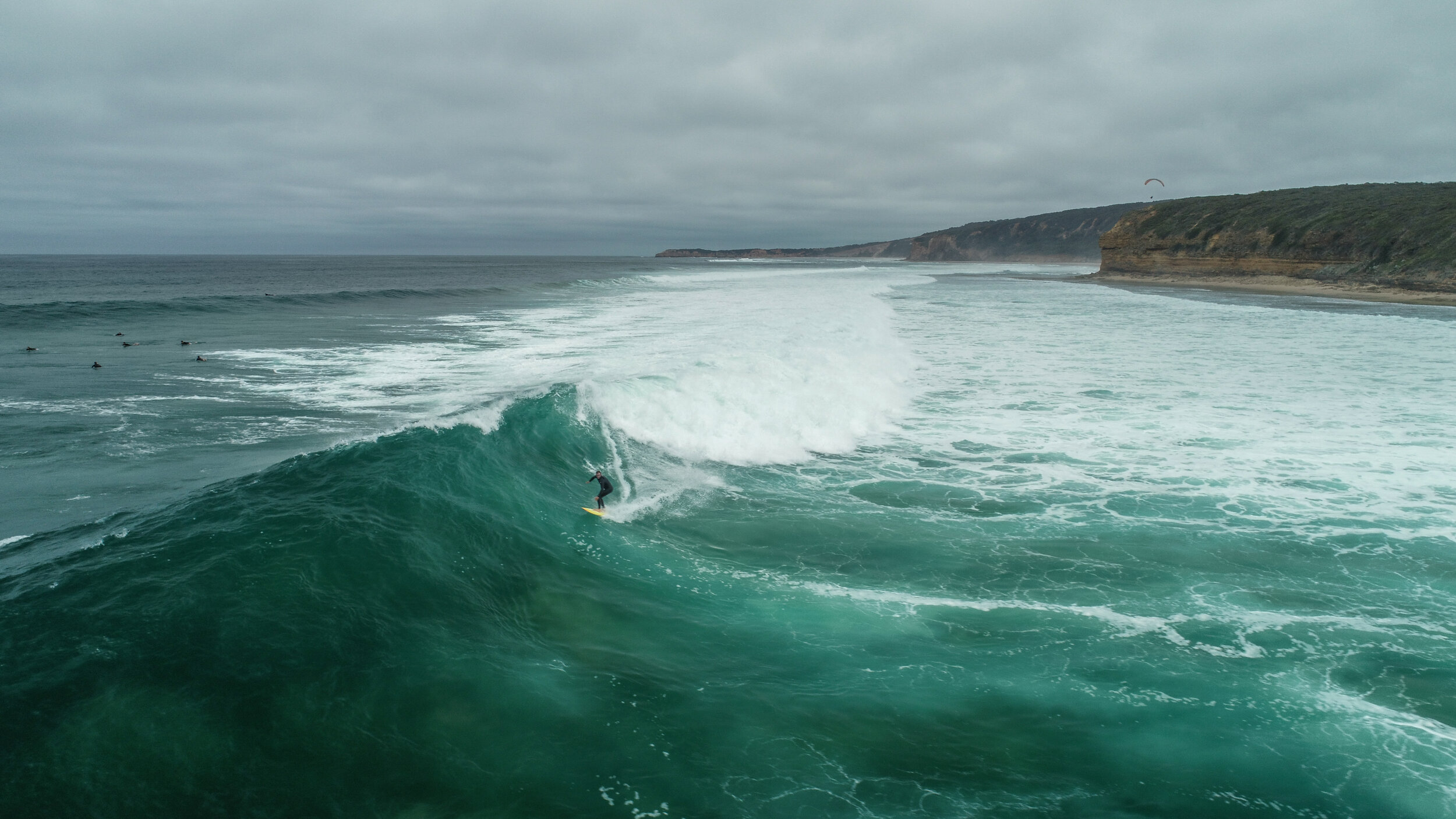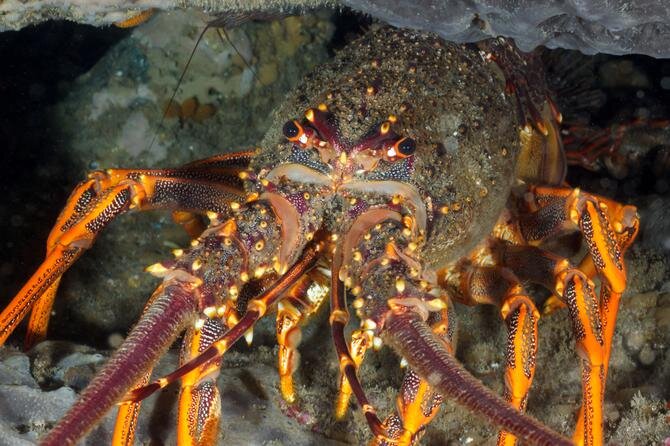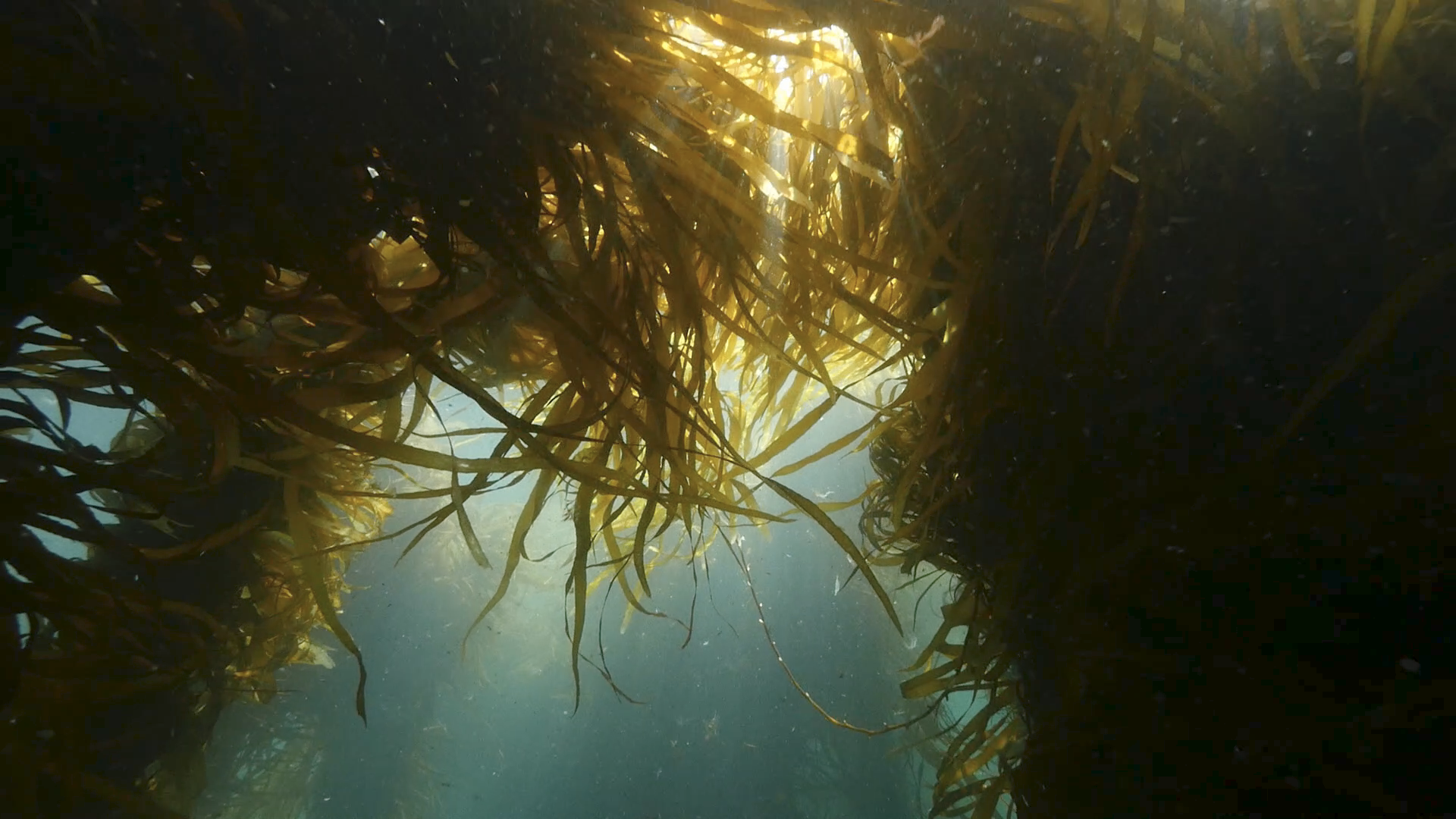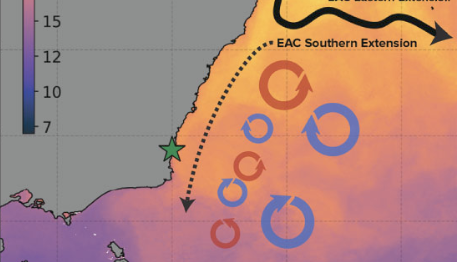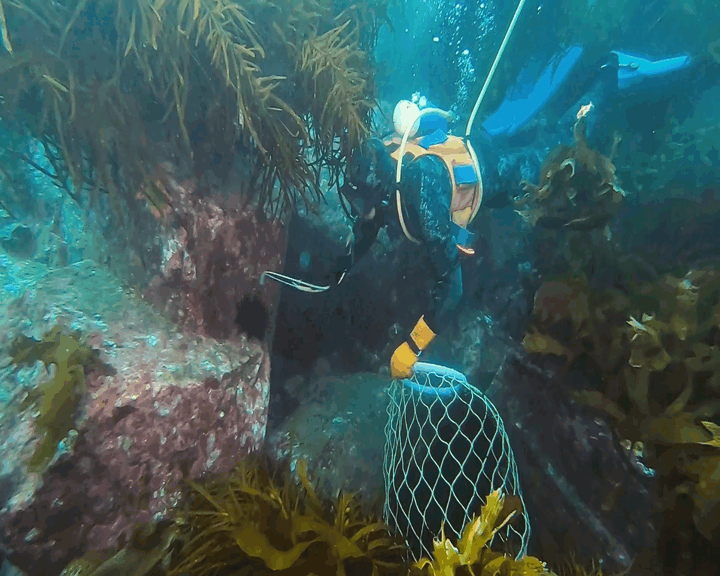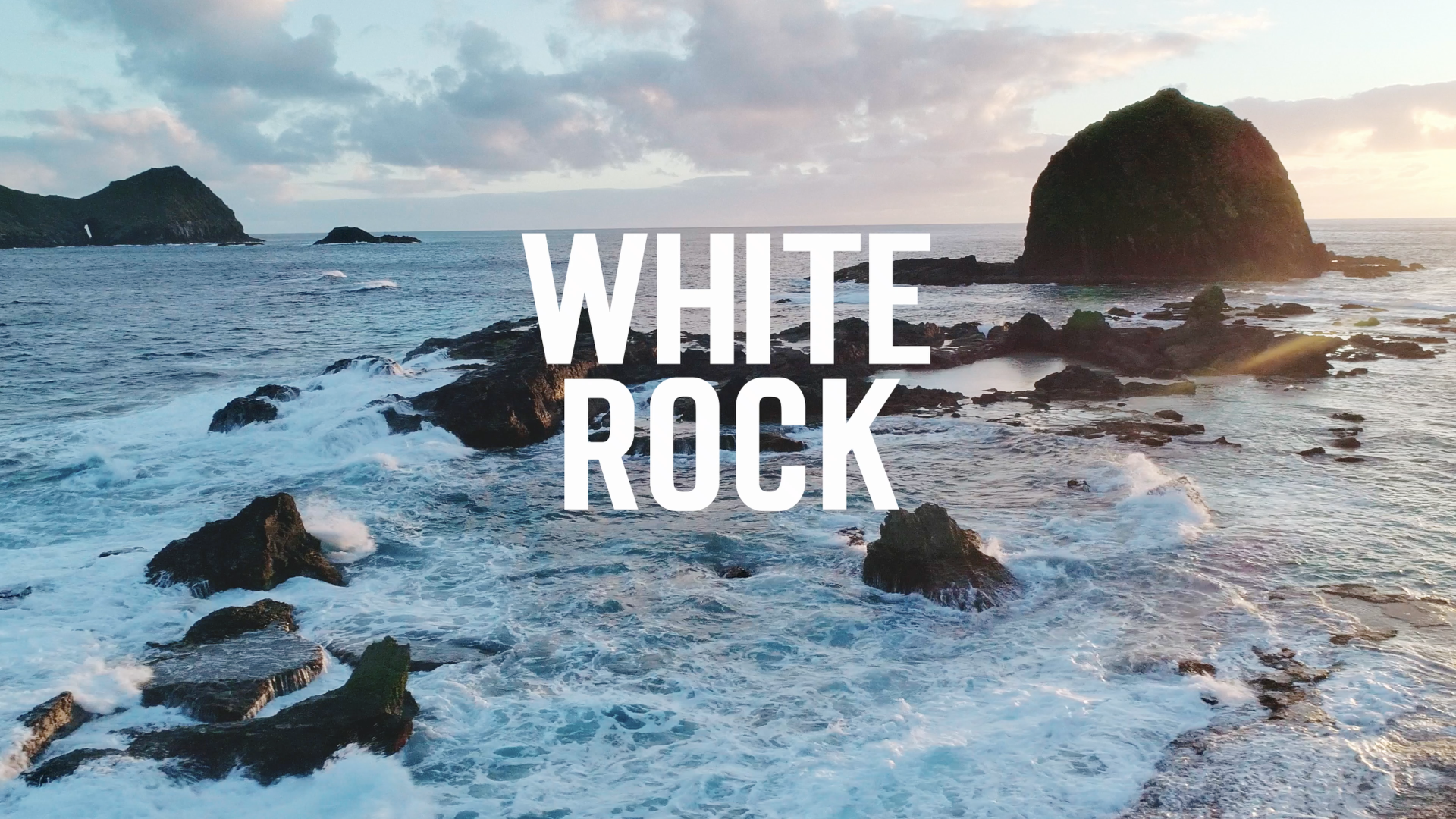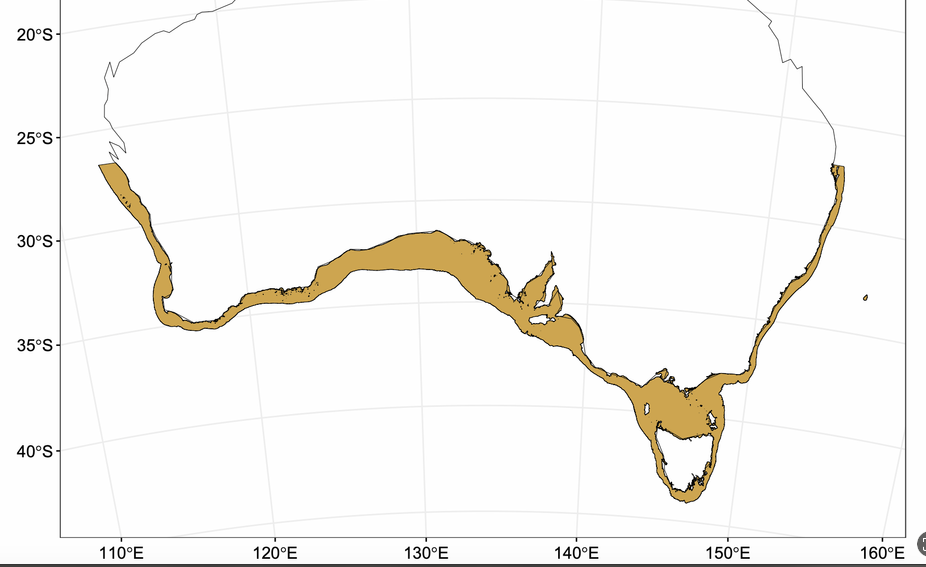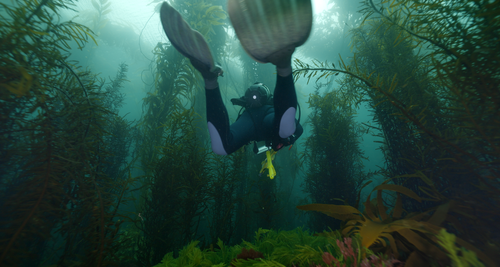Canopy Forming Underwater Forests
giant kelp
Fast growing habitat formers
Giant kelp, an iconic canopy-forming seaweed, can reach staggering lengths of over 35 metres and grow up to half a metre each day.
Much like golden kelp, giant kelp is a foundation species, playing a vital role in shaping marine ecosystems. Similar to trees in a forest, giant kelp transforms its environment, creating conditions that support a remarkable diversity of life.
The impact of giant kelp forests includes:
Slowing water movement: This creates sheltered habitats for animals on the sea floor.
Shading the seabed: While the canopy provides shade, it still allows an understorey of diverse, low-lying species to thrive.
Providing habitats at multiple levels: From the upper canopy to midwaters and within the holdfast, giant kelp supports a myriad of mobile and sessile (non-mobile) animals, fostering a vibrant underwater community.
Why are giant kelp forests important?
Facilitating Larval Settlement: By slowing down water movement, giant kelp retains drifting larvae within the reef system. This enhances the settlement of larvae on the seabed, which has been shown to improve rock lobster recruitment on Tasmanian coastal reefs.
Biodiversity Hotspots: Giant kelp forests create a three-dimensional underwater habitat, offering shelter and resources for an incredible array of species. From small fish seeking refuge from predators to larger species feeding on organisms within the canopy, these forests support an interconnected web of life.
Buffering Coastal Ecosystems: Giant kelp forests act as natural barriers, reducing wave energy and protecting coastlines from erosion. This not only preserves the shoreline but also stabilises habitats for a range of marine organisms.
Enhancing Fisheries and Local Economies: By providing critical habitat for commercially important species like rock lobsters, abalone, and various finfish, giant kelp supports sustainable fisheries. These forests also attract ecotourism, offering divers and snorkelers unique opportunities to explore underwater rainforests.
Climate Resilience: As climate change impacts marine environments, giant kelp forests can help buffer changes by stabilising temperatures and providing refuges for heat-sensitive species. However, they are also vulnerable to warming waters and shifting ocean currents, making their conservation vital.
A Carbon Sink: Seaweeds, including giant kelp, have been undervalued as potential carbon sinks. While their cells store carbon, they are soft and highly digestible, making them prone to consumption by animals or breakdown by bacteria. This process often releases stored carbon back into the environment as CO2.
loss of giant kelp forests
case study: restoring tasmania’s giant kelp forests
Mick Baron and Karen Gowlett-Holmes have been running the Eaglehawk Dive Centre on the iconic Tasman Peninsula since 1991. For decades one of the major attractions to the area has been the giant kelp forests. But over the years they have seen first hand the destruction of the giant kelp forests, a direct result of climate change.
Dependent on Tasmania’s giant kelp forests more than anyone, Mick and Karen have been instrumental in the efforts to research and rehabilitate these critically endangered ecosystems. With word spreading about restoration efforts, now the dive centre is increasingly receiving requests for people interested in diving on the restored reefs.
In this short film, Mick and Karen take you on a journey through the day in the life of these highly accomplished Tasmanian dive shop owners. The film explores their personal reflections on the dramatic changes observed in the giant kelp forests within their lifetimes and their ongoing efforts to raise awareness to the issue and gain traction in the rehabilitation of these reefs.
The above short film is a key part of our schools kit on restoration on the Great Southern Reef. Check out the student driven course available here and teacher notes can be found here. You can also find more school resources at our educator hub.
restoration on the gsr
Australian researchers are working at the global forefront of marine habitat restoration, with projects underway in every state along the Great Southern Reef. Habitat restoration is a resource intensive exercise used as a last resort for areas where vital habitats have been lost or are in decline and natural recovery is not occurring. Currently there are active restoration projects on the GSR working to restore seaweeds, seagrasses, and oyster reefs. Learn more about restoration on the GSR here.
you may also like:
